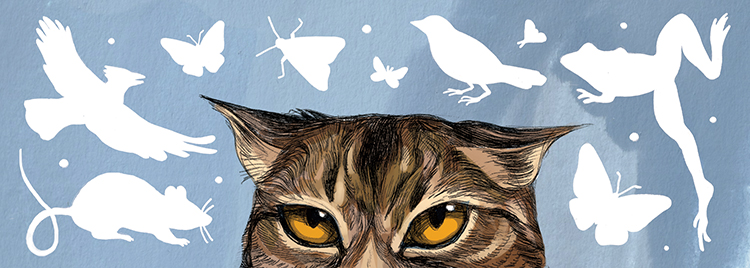 story by Bernard BrownI once enjoyed the deer of Woodlands Cemetery. I would jog around a mausoleum and they’d go bounding away. Often they wouldn’t flee, eerily tolerant of the human stumbling (you never feel clumsier than when you’re comparing yourself to deer) only a few yards away. They were a delight to watch, but it couldn’t last. That many deer don’t work in a landscaped park. Vague reports of culling surfaced online in 2007; then the deer were gone.
story by Bernard BrownI once enjoyed the deer of Woodlands Cemetery. I would jog around a mausoleum and they’d go bounding away. Often they wouldn’t flee, eerily tolerant of the human stumbling (you never feel clumsier than when you’re comparing yourself to deer) only a few yards away. They were a delight to watch, but it couldn’t last. That many deer don’t work in a landscaped park. Vague reports of culling surfaced online in 2007; then the deer were gone.
I suppose I could go to Valley Forge to see deer, but I can’t say I’d enjoy it. There they graze openly in the middle of the day—a desperate display of hunger for a shy creature that prefers to browse leafy vegetation at dusk and dawn. Soon the National Park Service will reduce that herd with sharp shooters and contraceptives—mostly sharp shooters given the timeframe: from about 1,300 deer to 175 over four years.
The plan is moving forward after years of controversy and lawsuits, an echo of Fairmount Park’s experience as it culled the herds in the Wissahickon and Pennypack from 2002 to 2006. Without wild predators or hunters, suburban and urban deer often strip the forests (and gardens) bare and start crashing through windshields. The cheapest way to remedy the situation is with bullets.
The deer-adoring public’s outcry—this is Bambi we’re talking about—is generally led by animal rights and welfare groups. Some argue for birth control, some argue for leaving the situation alone and letting nature take its course.
Unfortunately “nature” is as hard to get a fix on as a deer bounding through the trees. Humans have been major deer predators for about 12,000 years. Our Native American predecessors actually boosted deer populations. They intentionally set burns to keep forests open and encourage fresh growth that deer like to nibble, and unintentionally provided deer their favorite edge habitat by farming in a shifting patchwork of fields and forest. These days, we continue to set the table for deer with our own mosaic of parks, yards and landscaped gardens.
“Natural” doesn’t help us in Chestnut Hill or University City. We must decide what we want in our landscape—deer vs. native vegetation, deer vs. gardens, etc.—and how much we’re willing to pay for it. Labor-intensive birth control injections can cost hundreds of dollars per deer. Personally, I have a difficult time deciding; I don’t envy the land managers.
Last year, I came across a doe in Woodlands. She didn’t spook easily, and even took a tentative step my way. I drove her off with a shout and a clap, and told her not to come back.
Bernard Brown is an amateur field herper, part-time bureaucrat and director of the PB&J Campaign; read about his forays into the natural world at phillyherping.blogspot.com.



